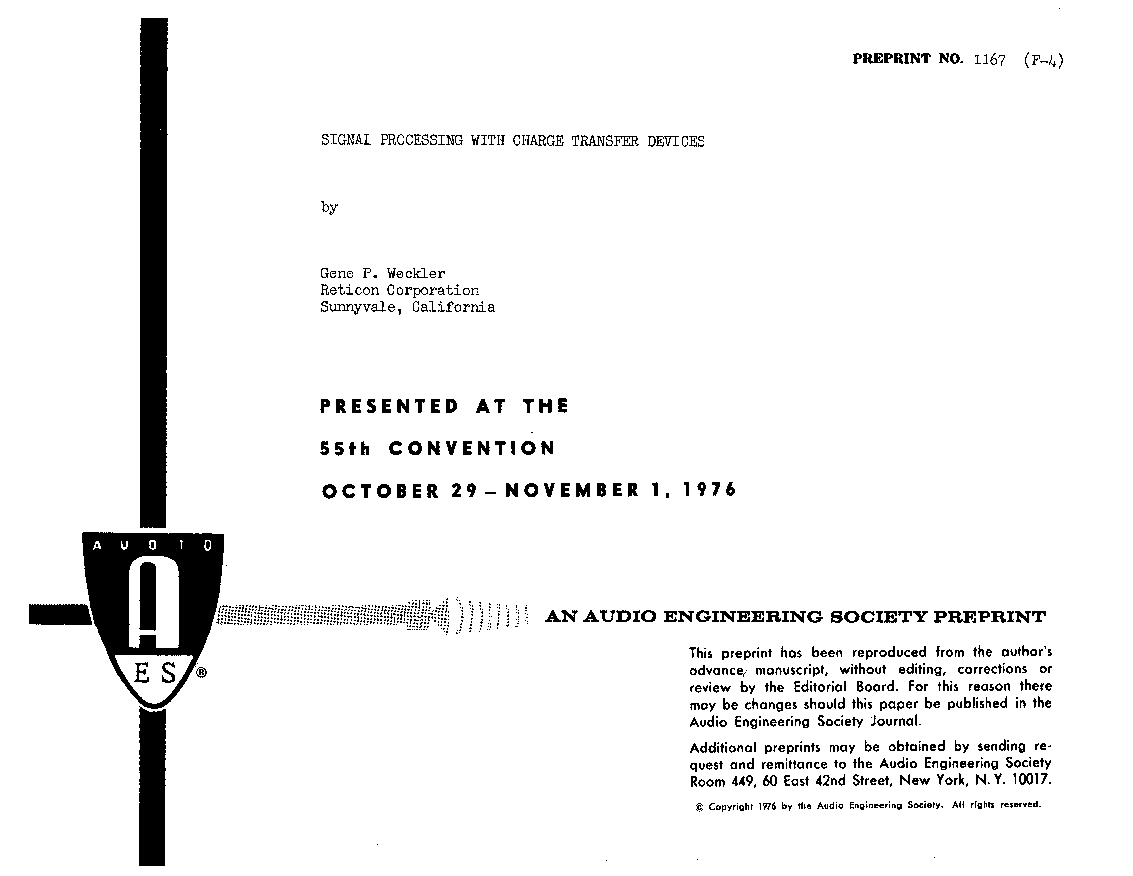Home / Publications / E-library page
You are currently logged in as an
Institutional Subscriber.
If you would like to logout,
please click on the button below.
Home / Publications / E-library page
Only AES members and Institutional Journal Subscribers can download
Until recently, signal processing involving successive time delays was implemented either by use of physical analog delay elements, such as acoustic or electric transmission-line delay elements, or by conversion to digital format for processing, then reconverting the processed results to an analog output. Wholly analog systems are cumbersome, expensive, and sensitive to environmental factors. On the other hand, conversion to wholly digital format is often unnecessary and penalizes the system in terms of cost, complexity, speed, and power. A very attractive alternative is discrete-time processing of analog samples. Time is quantized, but relative amplitudes are preserved. Delay is accomplished by transferring samples from cell to cell in shift-register fashion, while preserving relative amplitudes. Discrete-time systems combine many of the best features of both digital and analog systems: speed as well as the freedom from quantization effects of analog systems are combined with the time percussion and flexibility of digital systems.
Author (s): Weckler, Gene P.
Affiliation:
Reticon Corporation, Sunnyvale, CA
(See document for exact affiliation information.)
AES Convention: 55
Paper Number:1167
Publication Date:
1976-10-06
Import into BibTeX
Permalink: https://aes2.org/publications/elibrary-page/?id=2247
(426KB)
Click to purchase paper as a non-member or login as an AES member. If your company or school subscribes to the E-Library then switch to the institutional version. If you are not an AES member Join the AES. If you need to check your member status, login to the Member Portal.

Weckler, Gene P.; 1976; Signal Processing with Charge Transfer Devices [PDF]; Reticon Corporation, Sunnyvale, CA; Paper 1167; Available from: https://aes2.org/publications/elibrary-page/?id=2247
Weckler, Gene P.; Signal Processing with Charge Transfer Devices [PDF]; Reticon Corporation, Sunnyvale, CA; Paper 1167; 1976 Available: https://aes2.org/publications/elibrary-page/?id=2247